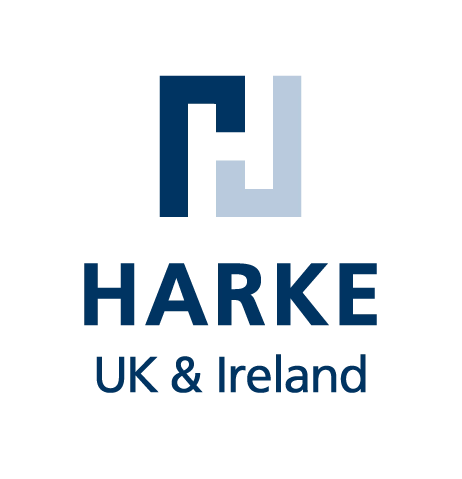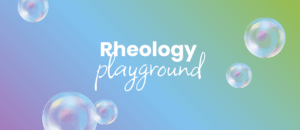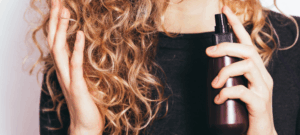This article gives an overview of the main types of bleach in the detergent industry, looking in detail at the specific organic and inorganic bleaches available, including two products supplied by HARKE UK & Ireland: EURECO™ PAP and Oxone™.
What Do We Mean By ‘Bleach’ In Detergents?
The generic term ‘Bleach’ in the detergent industry covers two main areas of application:
- Stain Removal: This is the destruction of coloured chemical species, either on soft or hard surfaces or improving the colour of a product, by removing yellowing caused by redeposition of soils or encrustation.
- Disinfection: Bleaches of various descriptions are powerful disinfectants killing most bacteria, fungi, yeasts etc. Note that if a bleach is used for disinfection it has to be registered under the Biocidal Products Regulation (BPR).
There are two types of bleaching agents in the detergent industry: organic and inorganic. Inorganic bleaches are mineral salts that release oxygen or chlorine to clean and disinfect. Organic bleaches are carbon-based compounds that work by generating strong bleaching agents that can perform well at lower wash temperatures. We’ll cover both in this article.
‘Inorganic’ Bleaching Agents
Sodium Hypochlorite
This is likely the most well known domestic bleach, and is used to clean and disinfect walls, drains, toilets, wash rooms etc. In the past it was also often used to disinfect contaminated clothing.
These days, Sodium Hypochlorite is most commonly used domestically in a thickened liquid form ca. 4.8% Av.Cl. solution thickened with surfactants (we have a formulation and method of production in our formulary), used in toilet and drain cleaners and as an additive to some floor cleaners. It is also used in mould cleaners for tiles as well as patio cleaners.
Sodium Hypochlorite is a very powerful oxidising bleach that will bleach dyes in fabrics and is corrosive to many substrates, so it should be used very carefully. Solutions should be kept at an alkaline pH, which prevents heavy metal ions from rapidly degrading it.
Note that this is the salt of Hypochlorous Acid (HClO) which can also be used as a bleach and has biocidal properties (mainly used at low concentration in skin disinfection). It is not registered directly under the BPR but goes under the release of Chlorine as the biocidal agent.
Hydrogen Peroxide
Hydrogen Peroxide (H2O2) is again a very powerful bleach, but less aggressive than Sodium Hypochlorite to dyes and fabrics when used at the correct levels to remove stains from fabrics and carpets etc. It is an unstable and very reactive product that needs to be kept at an acid pH.
Phosphonates such as HEDPA (Hydroxy Ethylidene Phosphonic Acid) are possibly the best things to use with Hydrogen Peroxide. Solutions of Hydrogen Peroxide with stable surfactants (Alkyl Amine Oxides for example) and HEDPA can be used as cleaners or stain pre-spotters. For these, the best pH level is around 5 to 6, and no higher than 7.0. These solutions will disinfect and remove bleachable stains.
Potassium mono-Persulfate (Oxone™ by LANXESS)
Potassium mono-Persulfate is a powdered peroxide used in powder or tablet based systems such as denture cleaners, powdered stain removers, agricultural disinfection (dairies) and water treatment. There is room for new applications too.
Like other inorganic bleaches, it will disinfect once in a solution. Potassium mono-Persulfate can also be used in cosmetic applications, mainly oral products such as stain removers. HARKE UK & Ireland supply this bleach under the name Oxone™ by LANXESS.
Chlorine Dioxide
This is a gas normally produced by the acidification of a Sodium Chlorite solution, giving a powerful disinfection solution. This has a BPR registration and is very aggressive.
Sodium Percarbonate (Oxyper® by Solvay)
Sodium Percarbonate is a powder product that combines Sodium Carbonate with Hydrogen Peroxide in a crystalline form (2Na₂CO₃·3H₂O₂). When dissolved in water, the Hydrogen Peroxide is released, acting as a bleaching and stain removing agent.
Sodium Percarbonate is usually used in laundry powders and stain removers, although for optimum performance it needs an activator such as TAED (Tetra-Acetyl Ethylene Diamine). When combined with TAED it produces Peracetic Acid, a much stronger bleach (see below).
Organic Bleaching Agents
Peracetic Acid
Peracetic Acid is a liquid product that bleaches stains and is a powerful disinfectant (registered under the BPR). However, it has a very strong odour of acetic acid and is difficult to use, requiring specialist handling equipment.
Peracetic Acid produced in situ: In laundry powders, Peracetic Acid can be generated during the wash, rather than being added directly, by combining TAED (Tetraacetylethylenediamine) with a per salt, usually Sodium Percarbonate. This reduces the activation temperature down to around 40°C, making it suitable for lower temperature washing.
Note that if you want to claim biocidal activity with this system then both the Sodium Percarbonate and the TAED must be registered under the Biocidal Products Regulation (BPR).
DCCA and TCCA
DCCA (Dichloroisocyanuric Acid) and TCCA (Trichloroisocyanuric Acid) are both crystalline powders that act as very strong oxidisers. They are mainly used in powdered abrasive surface cleaners, waste bin disinfectant powders and for water treatment such as swimming pool disinfectants in the form of blocks or tablets. They act as strong bleaches and disinfectants due to the release of Chlorine.
Phthalamido Peroxy Hexanoic Acid (PAP)
PAP is a powerful peroxy bleaching agent that comes in either stable dispersed liquid forms or coated granules. It is used in liquid form in industrial laundries and some household applications. As coated granules, it’s used in powdered detergents. Its performance is activated and enhanced by raising the pH to between 7 and 9 to give maximum performance in laundry wash. This pH can be higher in auto dishwash products. PAP will work at low temperatures, as it is another powerful disinfectant.
HARKE UK & Ireland supply PAP under the trade name EURECO™.
EURECO™ PAP is registered under the BPR and can be used outside of detergents. There are also specific grades for cosmetic use, mainly in oral products for teeth whitening.
Get in Touch
This is just an overview of the main grades available in the detergent market. If you’d like advice on the use and formulation of bleach/disinfectant systems in detergent application areas, please contact our technical team.
Written by Norman Lowe, Senior Technical Consultant, HARKE UK & Ireland, September 2025






